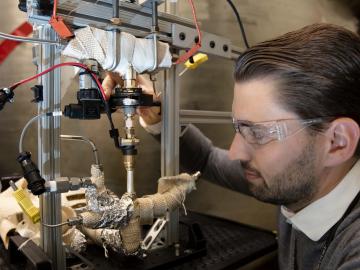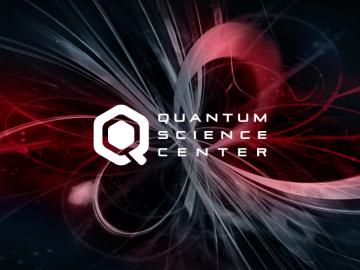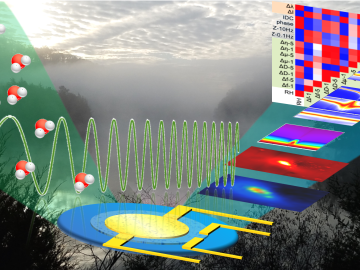
Filter News
Area of Research
- (-) Materials (37)
- (-) Neutron Science (11)
- (-) Supercomputing (34)
- Advanced Manufacturing (1)
- Biology and Environment (12)
- Computational Engineering (1)
- Computer Science (7)
- Electricity and Smart Grid (2)
- Energy Science (73)
- Fusion and Fission (16)
- Fusion Energy (11)
- Materials for Computing (10)
- National Security (15)
- Nuclear Science and Technology (11)
- Quantum information Science (7)
- Sensors and Controls (1)
- Transportation Systems (2)
News Type
News Topics
- (-) Fusion (6)
- (-) Grid (3)
- (-) Machine Learning (11)
- (-) Molten Salt (1)
- (-) Nanotechnology (21)
- (-) Quantum Science (16)
- (-) Transportation (17)
- 3-D Printing/Advanced Manufacturing (13)
- Advanced Reactors (3)
- Artificial Intelligence (25)
- Big Data (20)
- Bioenergy (10)
- Biology (9)
- Biomedical (22)
- Biotechnology (1)
- Buildings (4)
- Chemical Sciences (14)
- Clean Water (4)
- Composites (6)
- Computer Science (66)
- Coronavirus (12)
- Critical Materials (7)
- Cybersecurity (2)
- Energy Storage (19)
- Environment (26)
- Exascale Computing (17)
- Fossil Energy (1)
- Frontier (18)
- High-Performance Computing (28)
- Hydropower (1)
- Isotopes (9)
- Materials (39)
- Materials Science (48)
- Mathematics (2)
- Microscopy (15)
- National Security (3)
- Neutron Science (84)
- Nuclear Energy (17)
- Partnerships (3)
- Physics (17)
- Polymers (13)
- Quantum Computing (16)
- Security (3)
- Simulation (13)
- Software (1)
- Space Exploration (6)
- Summit (28)
Media Contacts

A team led by the U.S. Department of Energy’s Oak Ridge National Laboratory demonstrated the viability of a “quantum entanglement witness” capable of proving the presence of entanglement between magnetic particles, or spins, in a quantum material.

The daily traffic congestion along the streets and interstate lanes of Chattanooga could be headed the way of the horse and buggy with help from ORNL researchers.

At the Department of Energy’s Oak Ridge National Laboratory, scientists use artificial intelligence, or AI, to accelerate the discovery and development of materials for energy and information technologies.

For a researcher who started out in mechanical engineering with a focus on engine combustion, Martin Wissink has learned a lot about neutrons on the job

To better understand the spread of SARS-CoV-2, the virus that causes COVID-19, Oak Ridge National Laboratory researchers have harnessed the power of supercomputers to accurately model the spike protein that binds the novel coronavirus to a human cell receptor.

Scientists at Oak Ridge National Laboratory used new techniques to create a composite that increases the electrical current capacity of copper wires, providing a new material that can be scaled for use in ultra-efficient, power-dense electric vehicle traction motors.

The Department of Energy has selected Oak Ridge National Laboratory to lead a collaboration charged with developing quantum technologies that will usher in a new era of innovation.

An all-in-one experimental platform developed at Oak Ridge National Laboratory’s Center for Nanophase Materials Sciences accelerates research on promising materials for future technologies.

ORNL researchers have developed an intelligent power electronic inverter platform that can connect locally sited energy resources such as solar panels, energy storage and electric vehicles and smoothly interact with the utility power grid.

From materials science and earth system modeling to quantum information science and cybersecurity, experts in many fields run simulations and conduct experiments to collect the abundance of data necessary for scientific progress.


